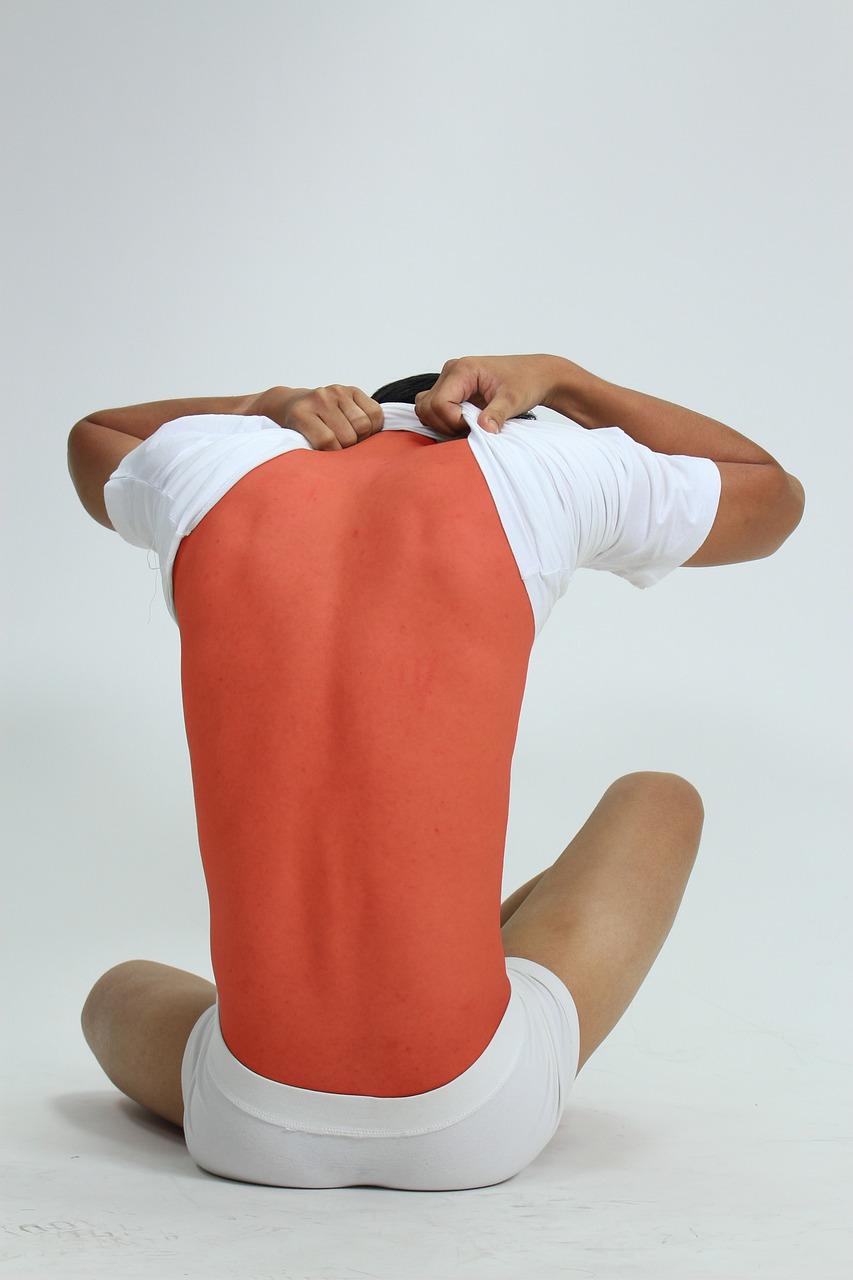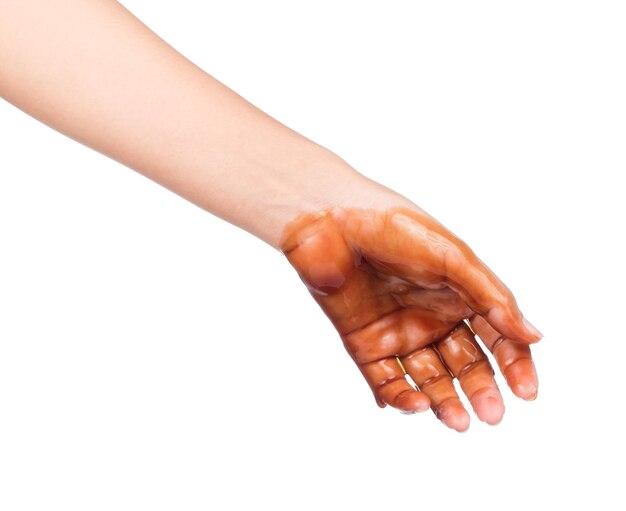Burns can be incredibly painful, and if you’ve experienced one, you know just how intense the discomfort can be. But have you ever noticed that the pain from a burn can come and go in waves? It’s not uncommon for burn pain to fluctuate, leaving you wondering why it doesn’t just stay consistent.
In this blog post, we will explore the reasons behind why burn pain comes in waves. We’ll also answer common questions such as how long burn pain lasts, how to stop a throbbing burn, and when to seek medical attention. So, if you’ve ever found yourself clutching at a burn and wondering why it hurts so much and why it’s not a constant pain, keep reading to find out the fascinating answers.
Why Does Burn Pain Come In Waves
When you accidentally touch a hot surface or get a nasty sunburn, you might notice that the pain doesn’t just stay at a consistent level. Nope, burn pain likes to show up fashionably late and then come and go like a fickle friend. But why does it play hide-and-seek with our nerve endings? Let’s dive in and find out!
The Flame of Inflammation
First things first, when you burn yourself, your body freaks out. It’s like a fire drill for your immune system. In response to the injury, your body releases a cocktail of chemicals including histamines and prostaglandins. These little troublemakers are responsible for all the redness, swelling, and throbbing sensation.
Gate Control Theory: The Bouncer of Pain
Now, let’s talk about something called the “Gate Control Theory.” Imagine your spinal cord as a nightclub with a selective bouncer at the entrance. This bouncer, let’s call him Barry, decides who gets in and who gets kicked out. When you burn yourself, the pain signals rush to the entrance, but Barry has the final say.
Sometimes, Barry gets overwhelmed by all the rowdy signals trying to get inside. This overload of signals can cause him to let in some pain signals but send others packing. That’s why you might experience waves of pain instead of a constant burn.
The Nerve of Those Nerve Endings
Nerve endings are like the drama queens of your body. They can be a bit melodramatic and enjoy stealing the spotlight whenever they can. When you burn yourself, these nerve endings send signals to your brain, like “Hey, boss, we got a problem here!”
But here’s the thing, these nerve endings aren’t synchronized swimmers. They fire at different rates and intensities, creating those unpredictable waves of pain. It’s like an orchestra where everyone is playing a different tune. Talk about a symphony of discomfort!
Timing Is Everything
Another reason burn pain likes to come in waves is because of how your body and brain process pain. It takes some time for your brain to fully register and interpret the pain signals. So, while the initial burn might be a shock to the system, it may take a moment for your brain to catch up and say, “Ouch, that really hurts!”
Once your brain catches up, it starts sending signals back down to the burn site to release natural painkillers like endorphins. These endorphins bring temporary relief and calm the stormy seas of pain. But just like a quick fix, their effects wear off, and the pain might come back with a vengeance.
Take a Chill Pill, Pain!
So, why does burn pain come in waves? It’s like that annoying friend who shows up unannounced and leaves whenever they feel like it. The flame of inflammation, the gatekeeper named Barry, the drama queen nerve endings, and the timing delay all play a role in this rollercoaster ride of discomfort.
If you find yourself dealing with burn pain, the usual remedies like cold water, aloe vera, and pain medication can help ease the waves. And hey, remember to take it easy on yourself. Accidents happen, but you’ll ride those waves of pain like a pro-surfer in no time!
FAQ: Why Does Burn Pain Come In Waves
How do you stop the throbbing pain from a burn?
Burn pain can be intense and throbbing, making it important to find ways to alleviate the discomfort. Here are a few tricks to help you find some relief:
- Cool it down: Run cool water over the burn for 10-15 minutes to reduce swelling and soothe the pain.
- Apply a cold compress: Use a cold compress or ice pack wrapped in a cloth to numb the area and relieve the throbbing sensation.
- Take over-the-counter pain relievers: Nonsteroidal anti-inflammatory drugs (NSAIDs) like ibuprofen can help reduce inflammation and alleviate pain.
How long does the pain from a second-degree burn last?
The duration of pain from a second-degree burn can vary depending on various factors, such as the severity of the burn and individuals’ healing process. Typically, second-degree burn pain lasts for about 1 to 3 weeks as the skin heals. However, it’s important to consult a medical professional for a proper diagnosis and personalized advice.
Why does a burn hurt so much?
Burns are incredibly painful due to the damage they cause to your skin’s nerve endings. When your skin is burned, these nerve endings become exposed, and any pressure or movement can trigger intense pain signals. It’s your body’s way of alerting you to the injury and encouraging you to protect the affected area.
Is using Vaseline effective for burns?
Vaseline, a popular brand of petroleum jelly, can provide some relief for minor burns. Applying a thin layer of Vaseline to a burn can create a barrier that locks in moisture and prevents the burn from drying out. However, it’s important to note that Vaseline should only be used on minor burns and not on severe or open wounds. Always consult a medical professional for proper burn care.
Is it normal for a burn to throb?
Yes, it is normal for a burn to throb. Throbbing pain often occurs when there is swelling or inflammation present. As your body sends more blood to the affected area to aid in healing, it can create a throbbing sensation. However, if the pain becomes unbearable or the throbbing persists for an extended period, it’s advisable to seek medical attention.
How can I determine if I have a second-degree burn?
Identifying the degree of a burn is crucial in determining the appropriate treatment. Here’s how you can recognize a second-degree burn:
- Blisters: Second-degree burns typically result in blisters. The blisters may be clear, filled with fluid, or appear reddish.
- Skin appearance: The burned area may have a deep pink or red color, along with swelling and possible weeping or oozing.
- Pain level: Second-degree burns are more painful than first-degree burns and often involve throbbing or sharp pain.
Remember, it’s best to consult a medical professional for an accurate diagnosis and appropriate treatment.
What is a fifth-degree burn?
While it’s essential to understand burn severity, fifth-degree burns are not a recognized classification. Typically, burns are classified into degrees ranging from first to fourth, depending on their severity. However, any burn that reaches the fifth layer of skin or penetrates deeper requires immediate medical attention.
How do you determine the severity of a burn?
Determining the severity of a burn involves assessing several factors, including the depth of the burn, its size, and the affected body parts. Medical professionals typically use the rule of nines, a method that divides the body into regions that represent 9% or multiples of 9%. By estimating the percentage of body surface area affected, healthcare providers can classify the burn as first, second, third, or fourth-degree.
How long should it take for a burn to stop hurting?
The duration for a burn to stop hurting varies depending on the severity. In general, mild first-degree burns may stop hurting within a few hours or days, while second-degree burns may take a few weeks. However, burns that fail to heal or continue to be excessively painful should be evaluated by a medical professional to ensure proper treatment.
Should I put ice on a burn?
No, you should avoid putting ice directly on a burn. Ice can further damage burned skin and cause frostbite. Instead, run cool water over the burn for 10-15 minutes or use a cold compress wrapped in a cloth to help alleviate the pain and reduce swelling.
What is the “rule of nines” in burns?
The “rule of nines” is a method used by medical professionals to estimate the percentage of body surface area affected by a burn. It divides the body into regions that represent 9% or multiples of 9%. This estimation helps determine the severity of a burn and guide appropriate treatment.
Why do people put salt on a burn?
Contrary to popular belief, it is not advisable to put salt directly on a burn. Salt can actually worsen the injury and cause more pain. Instead, cleanse the burn gently with cool water and apply a sterile bandage or dressing. For proper treatment, consult a medical professional.
How can I relieve pain from a second-degree burn?
To relieve pain from a second-degree burn, follow these steps:
- Cool it down: Run cool water over the burn for 10-15 minutes to help reduce pain and minimize swelling.
- Apply a sterile bandage: Cover the burn with a sterile non-stick bandage to protect it from dirt and bacteria.
- Over-the-counter pain relievers: Consult a medical professional and consider taking over-the-counter pain relief medication like ibuprofen.
- Avoid tight clothing: Dress comfortably and avoid wearing clothing that can rub against the burn and cause additional discomfort.
Is toothpaste good to apply on burns?
No, applying toothpaste to burns is not recommended. Despite common myths, toothpaste can potentially worsen the burn by blocking airflow and trapping heat. It’s best to stick to proper burn care techniques, such as cooling the burn with water and using sterile dressings. Seeking medical advice is always a wise choice for proper burn treatment.
How can I numb the pain of a burn?
To numb the pain of a burn, you can try the following:
- Over-the-counter pain relievers: Consider taking over-the-counter pain medication such as acetaminophen or ibuprofen, following the recommended dosage.
- Topical numbing creams: Seek advice from a healthcare professional regarding safe and suitable topical numbing creams for burn pain relief.
- Cool compress: Apply a cold compress or ice pack wrapped in a cloth to help temporarily numb the area and alleviate pain.
As always, consulting a medical professional is advised for proper medical advice and guidance.
How should I treat a burn that won’t stop hurting?
If you’re experiencing a burn that won’t stop hurting, it’s essential to seek proper medical attention. A healthcare professional can evaluate the burn’s severity, provide appropriate treatment, and ensure proper pain management. Avoid self-medicating or relying on home remedies for persistent pain.
What is a fourth-degree burn?
A fourth-degree burn is the most severe type of burn. It extends beyond the skin and affects deeper tissues, such as muscle, tendons, and bones. This type of burn requires immediate medical attention, as it can result in permanent damage and life-threatening conditions.
How can I soothe a second-degree burn?
Here are some tips to soothe a second-degree burn:
- Cool water: Run cool water over the burn for 10-15 minutes to reduce pain and inflammation.
- Use a sterile bandage: Cover the burn with a sterile non-stick bandage to protect it from dirt and potential infection.
- Avoid popping blisters: Let the blisters heal naturally as they act as a protective barrier.
- Pain relief medication: Consult a medical professional for appropriate pain relief medication, such as over-the-counter NSAIDs.
- Keep the burn clean: Gently clean the burn with mild soap and water to prevent infections.
Remember, seeking medical advice is crucial for proper treatment and guidance tailored to your specific burn.

